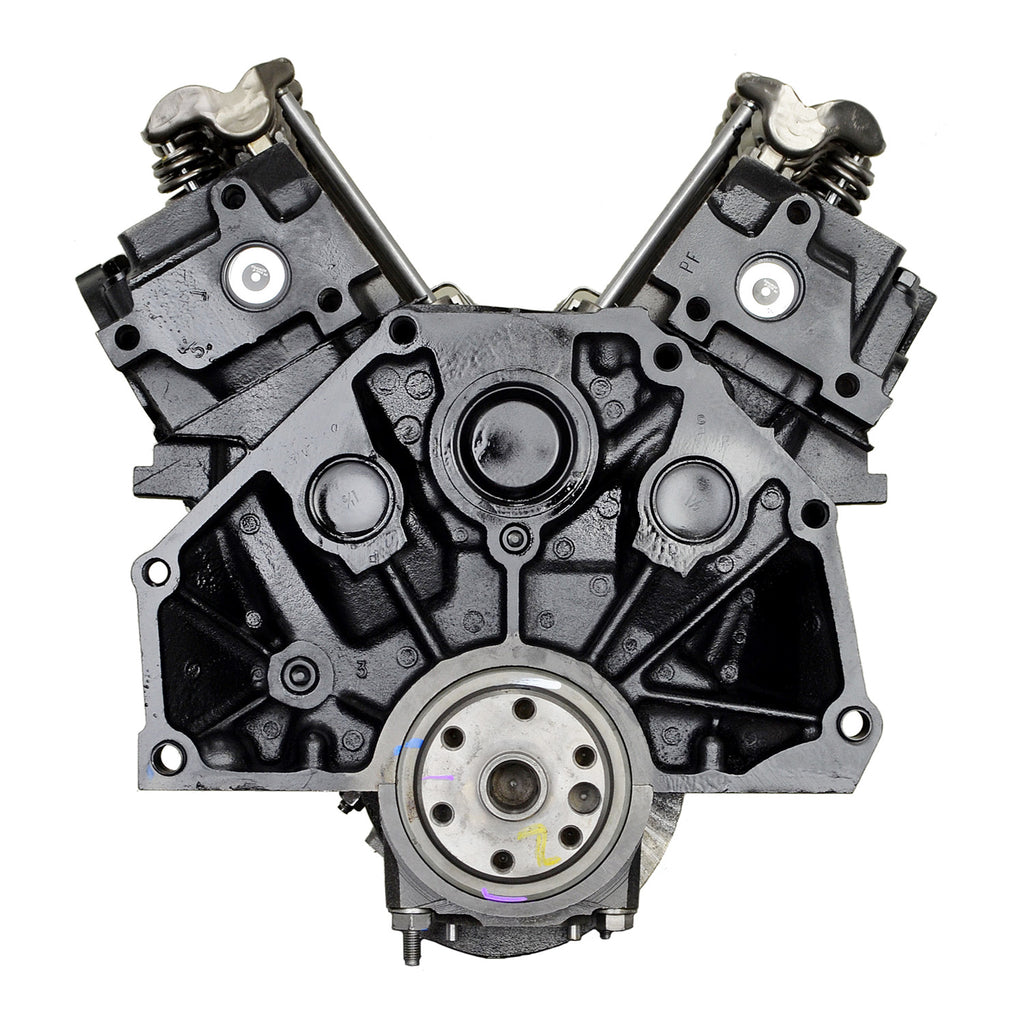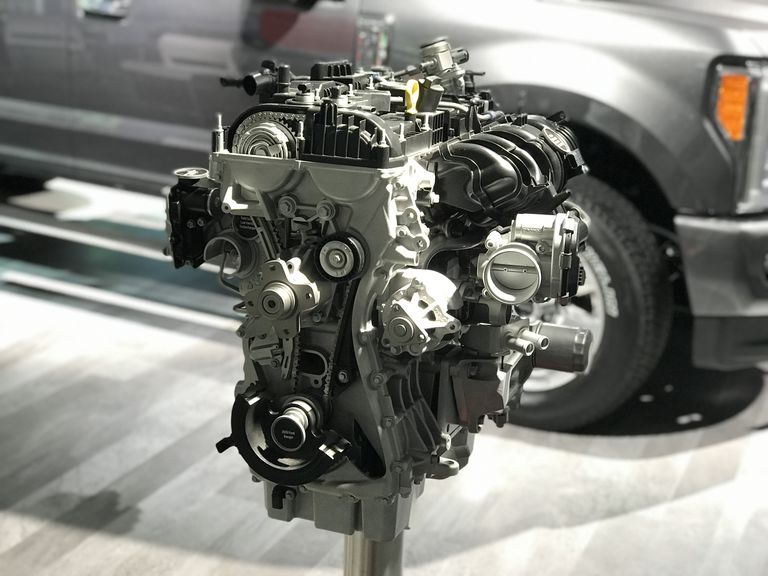How to Maintain and Optimize the 2.2 Ford Ranger Engine for Long-Lasting Performance
How to Maintain and Optimize the 2.2 Ford Ranger Engine for Long-Lasting Performance
Blog Article
Understanding the Basics of Cars And Truck Engines: Features, types, and features

Introduction of Cars And Truck Engines
An auto engine works as the heart of a vehicle, transforming fuel right into power to drive it ahead. This complex system consists of different components that operate in unison to make sure optimal efficiency and performance. The basic procedure of a car engine includes the internal combustion process, in which fuel and air are blended, ignited, and expelled to produce power.
The engine's layout can significantly influence its performance, gas performance, and emissions. Secret parts consist of the cyndrical tube block, pistons, crankshaft, and camshaft, each playing a vital role in the engine's total feature. The cyndrical tube block houses the cylinders where combustion takes place, while the pistons convert the explosive power from combustion right into linear movement. This activity is after that transformed into rotational power by the crankshaft, allowing the car's wheels to turn.
In enhancement to these elements, engines commonly utilize various systems such as fuel shot, ignition, and cooling down systems to enhance efficiency and long life. Understanding the fundamental mechanics of auto engines is crucial for performing and identifying concerns maintenance, eventually adding to the lorry's reliability and performance over time.

Kinds Of Cars And Truck Engines
Cars and truck engines can be categorized right into numerous types based on their design, gas kind, and operational principles. 2.2 ford ranger engine. The most common classifications include internal combustion engines (ICE), electric engines, and crossbreed engines
Interior combustion engines, which can be additional split into gas and diesel engines, run by firing up a fuel-air combination to generate power. Gas engines are generally lighter and smoother, while diesel engines are more fuel-efficient and offer greater torque.
Electric engines make use of electric energy saved in batteries to power an electrical motor, supplying instant torque and absolutely no exhausts throughout operation. As modern technology advancements, electrical cars (EVs) are significantly ending up being preferred for their ecological benefits and reduced running prices.
Crossbreed engines integrate components of both inner burning and electrical engines, permitting adaptable power resources and improved gas effectiveness. They can operate in various modes, making use of either the gas engine, the electric motor, or both all at once.
Each kind of engine has distinct benefits and drawbacks, influencing their application in different lorry kinds and market sectors, from small autos to sturdy trucks. Comprehending these kinds is vital for making informed choices relating to vehicle selection and efficiency expectations.
Engine Features Discussed
Comprehending engine functions is essential for grasping how automobiles run successfully. At the core of any type of internal combustion engine lies the fundamental procedure of transforming gas into mechanical energy.
The ignition takes place next, igniting the mix and producing a fast development of gases. This force drives the piston down throughout the power stroke, which eventually equates into the rotational movement of the crankshaft. The exhaust stroke then removes the invested gases from the chamber, making way for a new cycle to begin.
In enhancement to these primary functions, engines additionally incorporate systems that manage air conditioning and lubrication, guaranteeing ideal functional temperature levels and decreasing rubbing between relocating components. This intricate interaction of functions makes it possible for the engine to produce the power necessary for lorry propulsion while keeping performance and integrity. Comprehending these functions provides valuable understanding right into the intricacies of automobile engineering and boosts the capability to detect and resolve engine-related issues successfully.
Secret Engine Attributes
Engine design includes a number of vital features that substantially influence efficiency, performance, and sturdiness. One of the most essential aspects is the engine configuration, that includes inline, V-type, and level styles. Each configuration impacts the engine's power, size, and equilibrium output, consequently affecting general car characteristics.
Another crucial attribute is the engine variation, describing the overall quantity of all cylinders. Bigger variations typically generate more power but might compromise fuel performance. Engine products also play a pivotal function; high-strength and click resources lightweight materials, such as light weight aluminum and magnesium alloys, boost performance without adding extreme weight.
The sort of gas shot system used-- such as multi-port or direct injection-- influences burning effectiveness and discharges. Turbocharging and turbo charging are functions that increase engine performance forcibly additional air into the combustion chamber, increasing power outcome without considerably enhancing engine dimension.
Last but not least, the presence of innovative engine management systems maximizes fuel-air blend and ignition timing, adding to smoother procedure and far better gas economy. Jointly, these functions specify an engine's capabilities, establishing the foundation for its performance and durability in an affordable automotive landscape.
Maintenance Tips for Engines
Proper engine upkeep is vital for guaranteeing optimal efficiency and longevity, as ignoring routine care can cause substantial problems down the line. To maintain your engine successfully, begin with normal oil changes, typically every 3,000 to 7,500 miles, depending upon the kind of oil made use of. Fresh oil lubes engine parts, minimizing friction and wear.
Additionally, keeping an eye on coolant levels is vital to avoid overheating. Make certain that the coolant is topped up and remains in excellent condition to keep efficient temperature level policy. Regularly check and replace air and gas filters, as clogged up filters can impede air flow and fuel distribution, endangering engine effectiveness.
Additionally, take notice of spark plugs and ignition systems. Defective or used ignition system can lead to misfiring and reduced performance. Checking the battery terminals and links for corrosion is additionally essential, as a weak battery can impact engine beginning.
Final Thought
In summary, an extensive understanding of vehicle engines includes numerous kinds, functions, and essential attributes that considerably affect automobile efficiency. Interior combustion engines, together with hybrid and electrical alternatives, demonstrate varied systems for energy conversion. 2.2 ford ranger engine. Identifying the crucial functions, such as intake and exhaust cycles, along with essential engine functions like arrangement and fuel shot systems, equips auto proprietors with the knowledge required for reliable maintenance and operation, eventually improving vehicle longevity and efficiency
A car engine offers as the heart of a car, converting fuel into mechanical energy to thrust have a peek at this website it forward. The fundamental operation of an auto engine involves the interior combustion process, wherein fuel and air are mixed, ignited, and expelled to create power.
Regularly inspect and replace his response air and gas filters, as clogged filters can prevent air movement and gas distribution, compromising engine efficiency. - 2.2 ford ranger engine
In summary, a thorough understanding of cars and truck engines includes various kinds, features, and key functions that significantly affect automobile performance. Recognizing the essential functions, such as intake and exhaust cycles, along with vital engine functions like arrangement and gas shot systems, outfits car proprietors with the understanding needed for efficient upkeep and procedure, eventually improving vehicle longevity and effectiveness.
Report this page